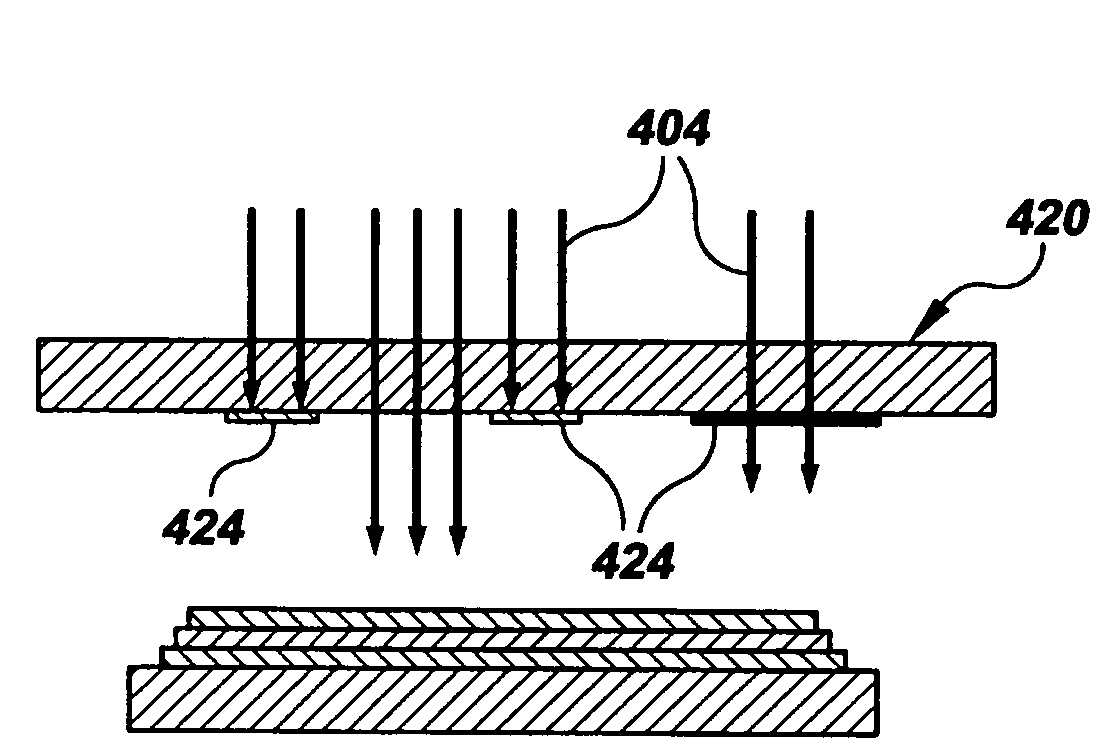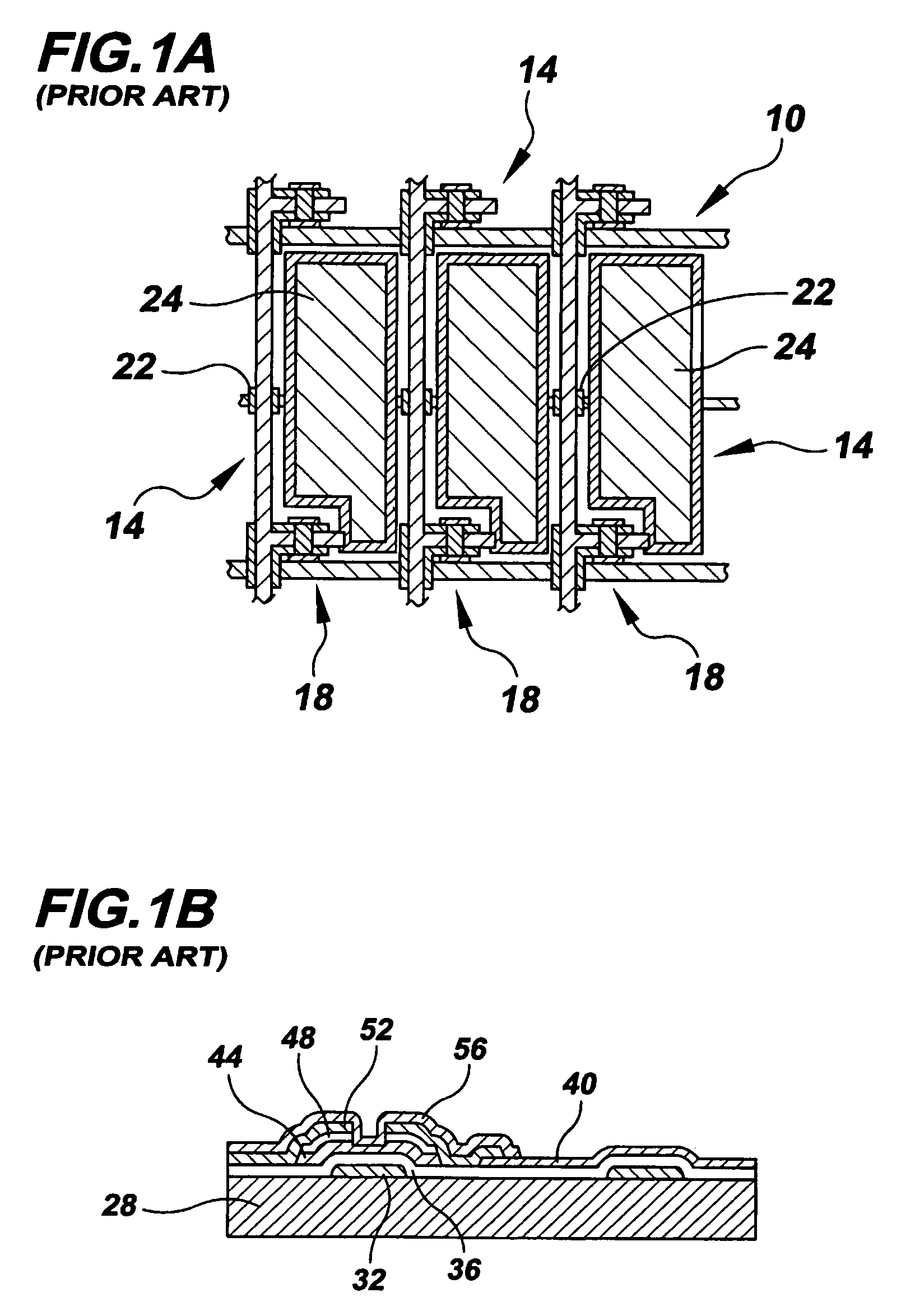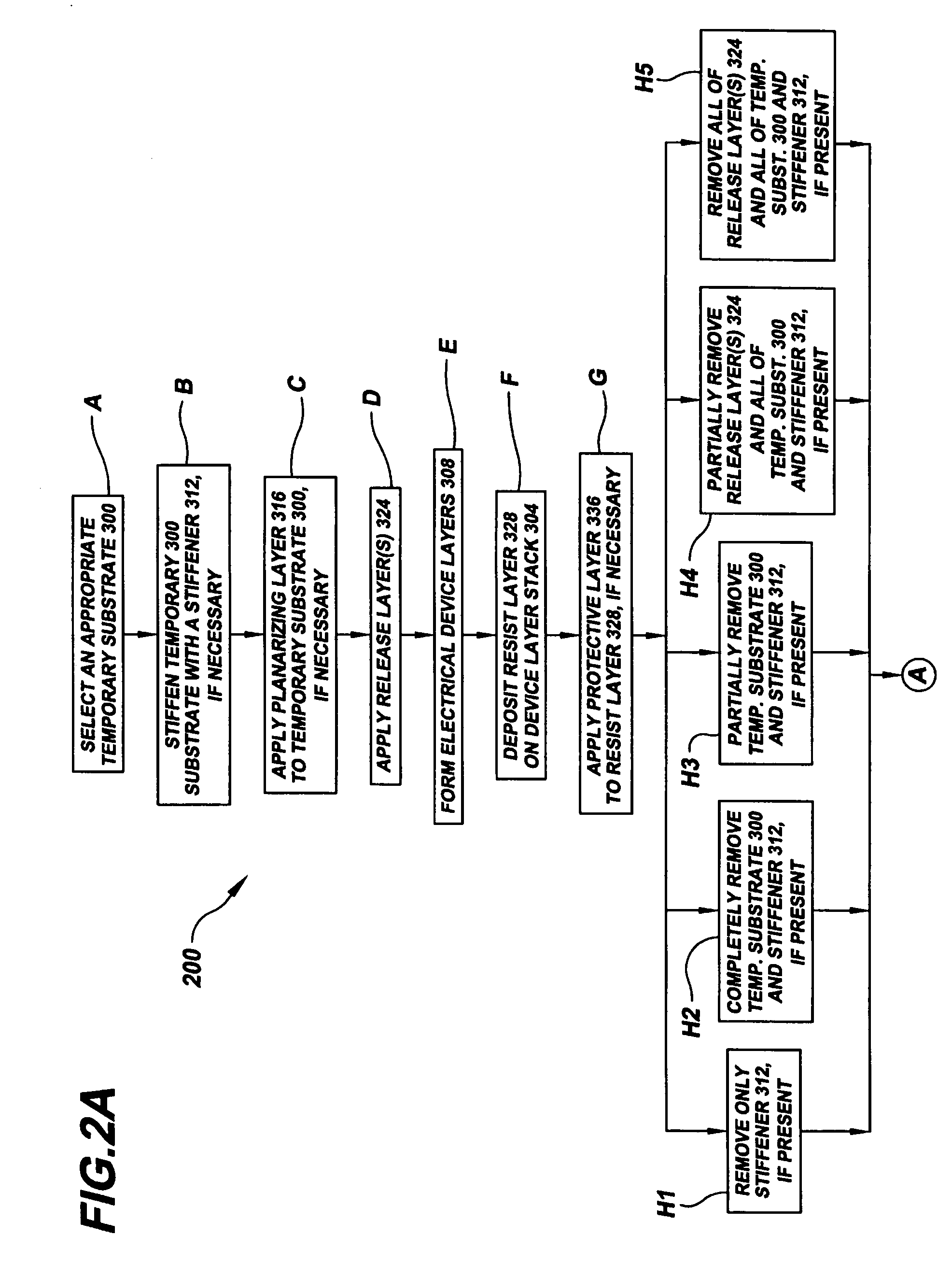Method of making a microelectronic and/or optoelectronic circuitry sheet
a technology of optoelectronic circuitry and microelectronics, applied in the field of microelectronics and optoelectronic circuitry sheets, can solve the problems of limited success in attempts, significant manufacturing and engineering challenges, and limit the maximum temperature that may be used during the manufacturing of the end produ
- Summary
- Abstract
- Description
- Claims
- Application Information
AI Technical Summary
Benefits of technology
Problems solved by technology
Method used
Image
Examples
example 1
[0132]Referring now to FIGS. 8A-8V, following is an exemplary recipe for making a particular active matrix pixel circuitry sheet 800 (FIG. 8V) of the present invention that may be used as an active matrix backplane of a display device.
[0133]
Step A:Choose an aluminum metallic foil having a thickness of lessthan about 20 microns as a temporary substrate 804.Step B:Attach a stiffener 808 to the backside of temporarysubstrate 804. For example, stiffener 808 may be a nickel,stainless steel or other metal foil having a thickness of about100-200 microns.Step C:Electro-polish the exposed surface of aluminum foil temporarysubstrate 804 so as to achieve a high degree of planarizationof surface 810.Step D:Deposit a gate metal layer 812. Alternatively, aluminum foiltemporary substrate 804 may be alloyed and intrinsicallyused as a gate metal layer.Step E:Deposit a silicon nitride (SiNx) layer (coating) 816, anamorphous hydrogenated silicon layer 820 and an n+ dopedamorphous silicon layer 824 usi...
example 2
[0145]The recipe detailed in Example 1 may be modified for display devices that do not require a transparent TFT backplane. For example, self-emissive devices such as top emitting OLEDs / PLEDs, or reflective devices like electrophoretics, electrochromics, reflective LCDs do not require a backlight for operation. An exemplary modified recipe is as follows. It is noted that steps A-L in the following recipe are identical to Steps A-L revealed in Example 1, above. The following steps are illustrated in corresponding respective FIGS. 9A-9V.
[0146]
Step A:Choose an aluminum metallic foil having a thickness ofless than about 20 microns as a temporary substrate 900.Step B:Attach a stiffener 904 to the backside of temporary substrate900. For example, stiffener 904 may be a nickel, stainlesssteel or other metal foil having a thickness of about 100-200microns.Step C:Electro-polish the exposed surface of aluminum foil temporarysubstrate 900 so as to achieve a high degree of planarizationon surfac...
example 3
[0148]The recipe detailed in Example 2 may be further modified for displays that do not require a transparent TFT backplane. An exemplary modified recipe is as follow. It is noted that Step A-L in the following recipe are identical Steps A-L revealed in each of Examples 1 and 2, above. FIGS. 10A-10U illustrate the following corresponding respective steps.
[0149]
Step A:Choose an aluminum metallic foil having a thickness of lessthan about 20 microns as a temporary substrate 1000.Step B:Attach a stiffener 1004 to the backside of temporary substrate.For example, stiffener may be a nickel, stainless steel orother metal foil having a thickness of about 100-200 microns.Step C:Electro-polish the exposed surface of aluminum foiltemporary substrate 1000 so as to achieve a high degree ofplanarization on surface 1006.Step D:Deposit a gate metal layer 1008. Alternatively, aluminum foiltemporary substrate 1000 may be alloyed and intrinsicallyused as a gate metal layer.Step E:Deposit a silicon nitr...
PUM
 Login to View More
Login to View More Abstract
Description
Claims
Application Information
 Login to View More
Login to View More - R&D
- Intellectual Property
- Life Sciences
- Materials
- Tech Scout
- Unparalleled Data Quality
- Higher Quality Content
- 60% Fewer Hallucinations
Browse by: Latest US Patents, China's latest patents, Technical Efficacy Thesaurus, Application Domain, Technology Topic, Popular Technical Reports.
© 2025 PatSnap. All rights reserved.Legal|Privacy policy|Modern Slavery Act Transparency Statement|Sitemap|About US| Contact US: help@patsnap.com



